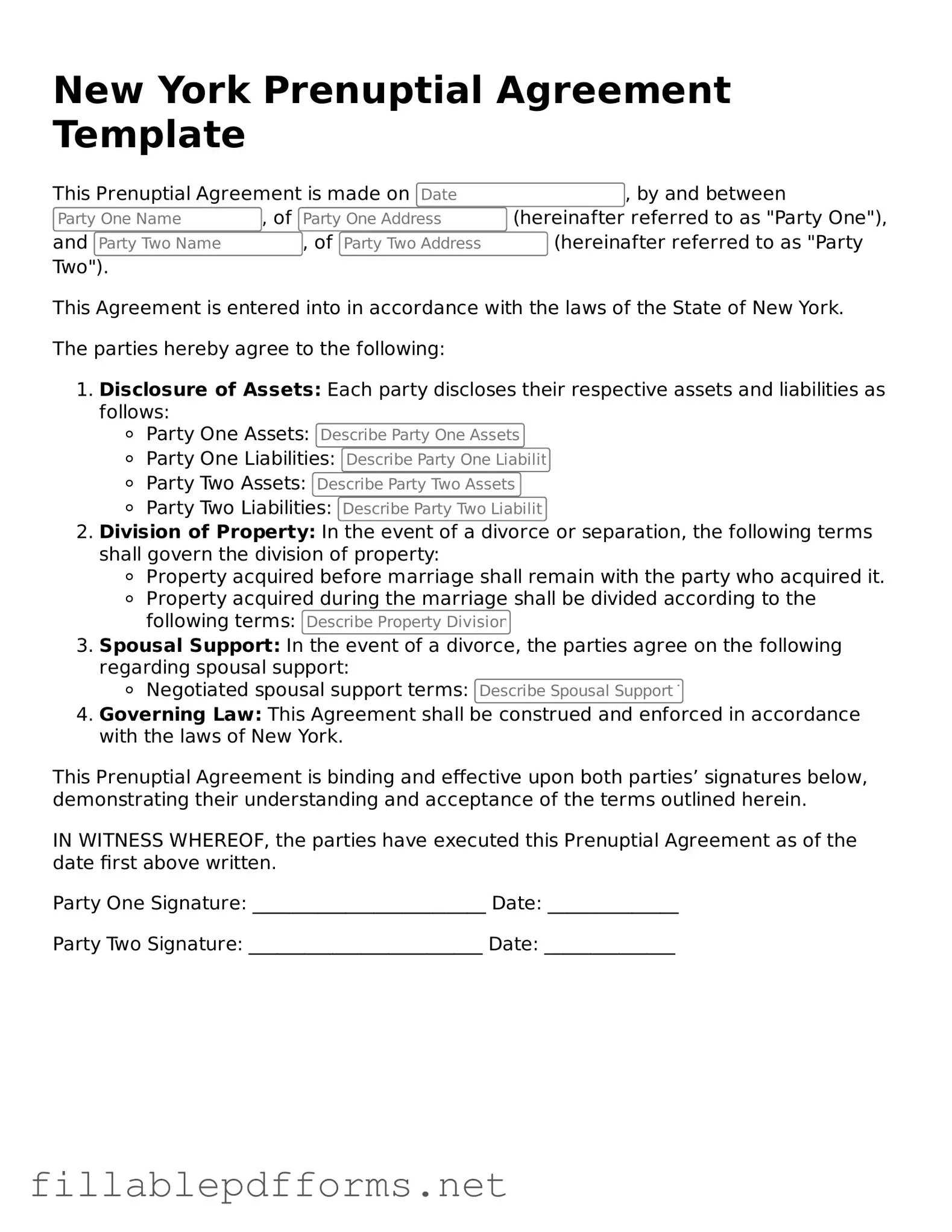Attorney-Verified Prenuptial Agreement Form for New York State
A Prenuptial Agreement is a legal document created by two individuals before they marry, outlining the division of assets and responsibilities in the event of a divorce or separation. In New York, this agreement helps couples establish clear expectations and protect their individual interests. Understanding the New York Prenuptial Agreement form is essential for anyone considering marriage, as it provides a framework for financial security and peace of mind.
Launch Editor Here
